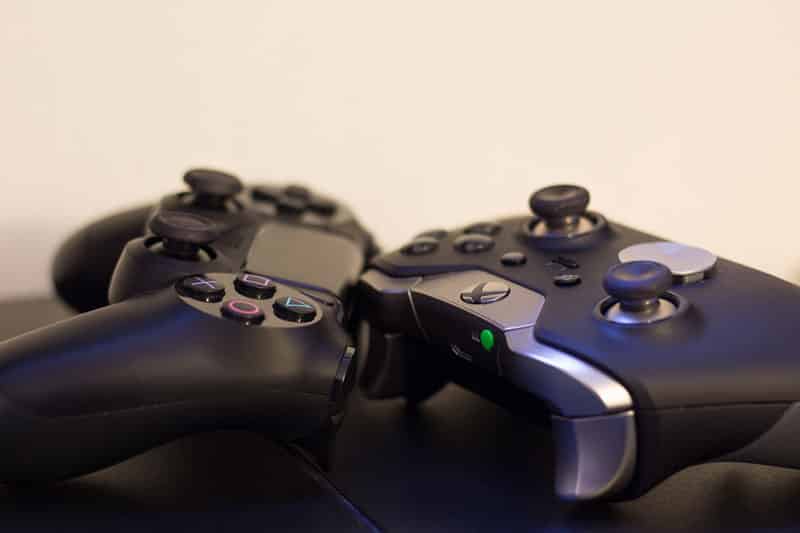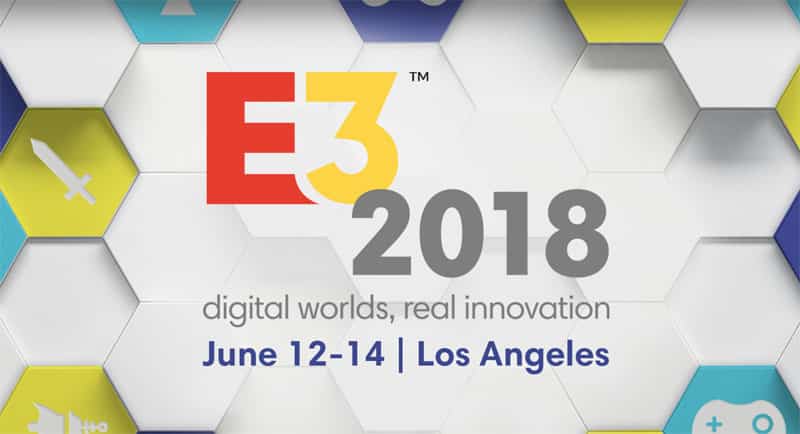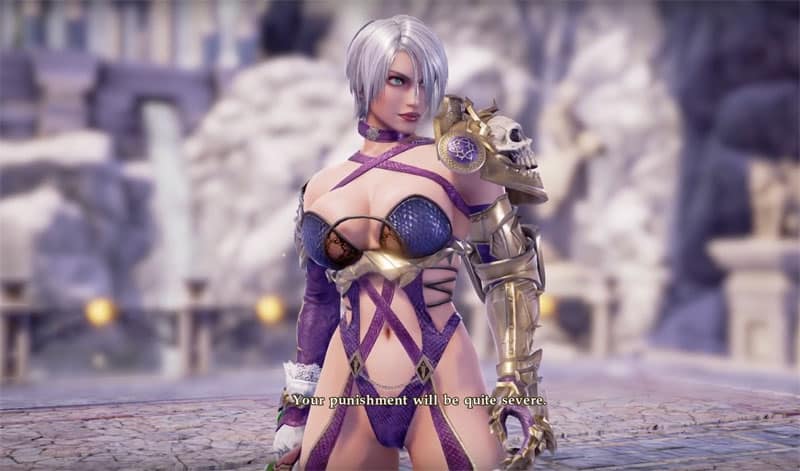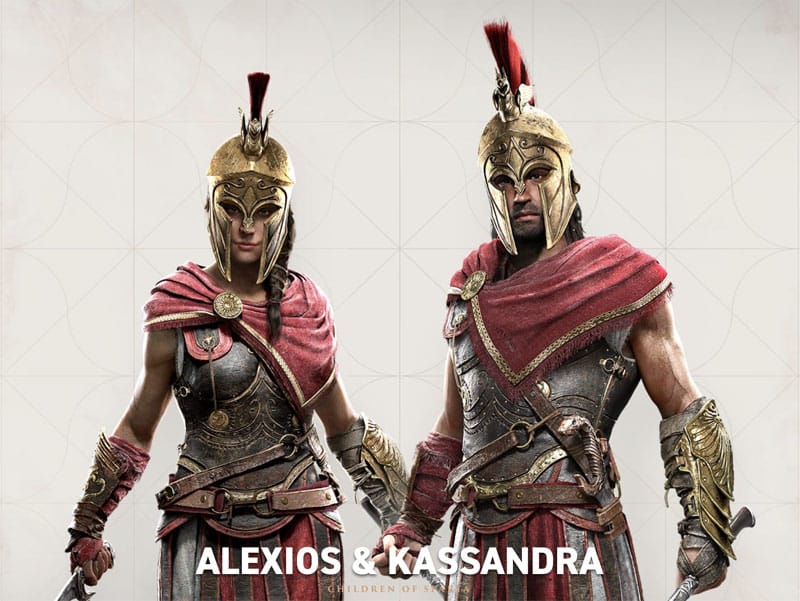
Getting closer, but we’re not there yet
I’ve been a gamer my entire life. My mom loved games and I definitely inherited that love of play and puzzles from her as early as I can remember. We already had an ATARI 800 when I was born, and my mom made the effort to buy me an ATARI 2600 in 1985 because she saw that I really enjoyed playing. From there, I have continued my gamer life through the years via various gaming and console platforms. This includes the Nintendo Entertainment System (NES), Sega Genesis, classic Gameboy, Nintendo 64, PlayStation, PlayStation 2, Xbox, PlayStation 3, PlayStation Portable (PSP), Wii, and finally, PlayStation 4.
Now, you’re probably wondering why I went through the trouble of giving you this background and establish my gamer credentials. It’s also worth mentioning that I’ve had to defend my credibility in regards to my opinions on video games because I’m a woman, for as long as I can remember. Learning how to navigate my relationship with other gamers was a necessity from early on. Before playing online, there was the arcade, which was the great democratizing force, as long as you had quarters.
Once playing video games from home with anonymous players online became possible, I had to learn to obscure my gender in order to continue enjoying my gaming experience. The gamer boy’s club trolls are real and it caused me, like many other girls and women, to hide in plain sight to avoid negative attention. I played various MMOs where I would avoid drawing attention away from the assumed default male gamer persona. At first, I was thrilled to play as the first female avatars available & then be on mic. It was a harsh and swift lesson learned. I quickly opted to camouflage my identity in order to “be just one of the guys”.
Between the unsolicited comments from fellow gamers and the fact that I’d rather not move around the game’s world in the skimpiest outfit imaginable, I didn’t want to continue playing as the female option. My internalized misogyny made this choice far easier than I would care to admit until recently. In reality, it was a bit of a survival tactic, as well. Would I let the vitriol from anonymous people online deter me from a pastime I’ve cherished my entire life? At the time, I chose to not test the waters of standing firm. It wasn’t until the past few years that I’ve had a much firmer ability to present myself as the woman gamer I have always been.
Increased Representation of Women & POC
As an avid gamer, I’ve paid attention to the announcements from Electronic Entertainment Expo, more commonly known as E3, since its inception in 1995. I remember reading Game Informer with bated breath thinking about all the new games being announced. It has been a bucket list item of mine to actually attend E3; something I have almost been able to do twice now, but life has had other plans at the last minute. Needless to say, when they started streaming coverage of the Big Three’s – by which I, of course, mean Sony, Microsoft, and Nintendo – showcases online, I was there for each showcase anxiously awaiting the lineups for the upcoming year.

E3 2018
This year felt different to me in some very particular ways: there was more representation of diverse individuals. Not only in the games showcased, but also those on stage doing the demonstrations. Even in the playable characters and types of storylines being highlighted.
Maybe, it’s because I myself am becoming increasingly aware of the media I consume. It could also simply be because the cultural zeitgeist has a spotlight on #RepresentationMatters. Regardless, E3 gave me signs that the gaming industry was starting to head in the right direction.
Why can’t all playable characters be a cisgender white man or the virgin/whore woman trope?
The notable misstep at E3 was the fact that the developers of SoulCalibur 6 refuse to read the room regarding objectification no longer being the hip thing. Of course, I’m talking about Ivy. For an amazing write up on this, please check out Cecilia D’Anastasio’s piece. I agree with her that while I have loved playing fighters, I’ve always felt unnerved by the exaggerated breast physics, the lack of clothing, & overall overt efforts to ignore actual fighting in lieu of making the women characters “sexy”.

Ivy’s outdated character design is lagging behind the times.
If the immense financial and cultural successes of both Wonder Woman and Black Panther didn’t drive this home enough this past year, there is a huge market for seeing yourself being represented in popular media. It is profoundly impactful and validating, so people are willing to celebrate it with their purchasing power. Up until these two movies, in particular, the Hollywood adage had been that there was no real market value for these stories. That makes them too risky to finance. Well, clearly that was wrong on all accounts. Wonder Woman grossed 821.9 million USD and Black Panther grossed 1.344 billion USD in the box office.
More diverse individuals are now exerting their purchasing power in the entertainment industries. This means they should no longer tailor popular media solely to cisgender males between the ages of 13 to 35. Aside from SoulCalibur 6 refusing to get with the current market response, this year’s E3 saw a continued shift towards diverse gaming experiences and storylines primarily from Sony and Microsoft. Nintendo has always been a more family-focused platform, aside from the mature Capcom series such as Resident Evil, so it wasn’t surprising to see Nintendo continued to focus on their quirky and nostalgic brand of gaming.
What really struck me from watching the showcases from Sony, Microsoft , and Electronic Arts (EA) was how refreshing and exciting it felt to have playable and featured women in various big titles. Gears 5 (Xbox One and PC) will focus on Kait’s storyline; while there will be switching between her and her partner, this latest installment in the Gears of War franchise will more explicitly move the shift away from having us work from a solely male protagonist perspective. The Last of Us Part II (PS4) has us continuing with Ellie’s story, but also introduced her new bisexual love interest, Dina. This also comes along with the previously announced three playable woman characters: Yara, Emily, and a yet to be named character voice acted by Laura Bailey. EA came out strong with Assassin’s Creed: Odyssey (PS4, Xbox One, PC), allowing players to now choose between a male and female protagonist that is also able to romance regardless of gender.

Alexios (right) and Kassandra (left) are the two playable characters in Assassin’s Creed Odyssey.
Another type of representation that I am really appreciative they are continuing to bring to the video game genre is the platonic relationship between Lara Croft and Jonah Maiava in Shadow of the Tomb Raider (PS4, Xbox One, and PC). I have had a lot of great friendships with guys throughout my life and have always been frustrated with the trope that men and women cannot be friends without a romantic end game. It’s important that all kinds of relationships are represented in media.
Representation Front and Center
Something that may not have been noticed by many, was the nonchalant inclusion of women and persons of color (POC) among the individuals on the stage. In particular, demonstrating gameplay from the various games being featured by Microsoft and Sony. The two instances that really stood out for me were during Microsoft’s showcase: Forza Horizon 4 and Tom Clancy’s Division 2. In the four or so groups of players that were on the stage demonstrating Forza Horizon 4’s open-world gameplay, one featured player was a woman of Southeast Asian descent. During the demo of gameplay for Tom Clancy’s Division 2, the team of four players comprised of two men and two women, not only in real life, but also as their respective avatars.
All four were on microphones giving out orders and coordinating an attack on an enemy base. As someone who quickly stopped using my microphone while playing Call of Duty Player Versus Player (PVP) because I no longer wanted to deal with the negative attention for being a woman, this instance of a coed team of gamers and corresponding avatars was refreshing.
This representation of women and POC being highlighted as fellow gamers is important, not just for those communities, but also for those not in those communities. It helps broaden what everyone thinks of as a gamer and can create a better environment for everyone involved.
Market pressure is the driving force behind more diversity from North American & European video game studios, while Japanese developers seem to not have gotten the memo.
Why do the developers of the SoulCalibur series even go through the pretense that they are holding on to antiquated visual objectification of women? Especially when every other studio seems to have gotten the memo? Is it a cultural perspective that keeps the Japanese developers in a self-imposed bubble of obliviousness? I don’t have the answer, but I imagine the market pressures will begin to force the issue sooner than later. This gamer can only hope that is the case because that means better games overall.
Why isn’t it enough already?
Despite the #MeToo Movement bringing about consequences for abusers within the Hollywood & American comedy worlds, why are known abusers highlighted in #GamerGate still welcomed & celebrated in the gaming industry & E3 in particular?
While all the changes above are great, they’re merely superficial. That is, so long as the underlying toxicity of the gaming industry’s sexual harassment culture is not addressed and actively corrected. The intense backlash generated by #GamerGate is still having professional and personal ramifications for the courageous women who raised their voices. They called out the abuse that had for so long been tolerated or blatantly ignored, but the abusers still reap the benefits of privilege and access without consequences. Why has the gaming industry remained insulated from the cultural zeitgeist of valuing the survivor over the reputation of the abuser? Why are these known abusers still included in industry events like E3?
The gaming community still has a rampant vein of entitled gamers that fosters this toxic environment. The recent public firing of Jessica Price by ArenaNet is a harrowing example that there is still a dire need for real change in how game companies respond to troll mob mentality. The amount of misogyny, including a lot of internalized misogyny by women gamers, fueling the hysteria on Twitter and Reddit that culminated in her firing should be shocking in the midst of the #TimesUp movement. However, within the context of the gaming industry, it is sadly still not on par with the rest of the entertainment industry.
It seems the last holdouts in addressing the insidious culture of abuse within the entertainment industries are animation and video games. The past year has had several revelations of serial sexual abuse by prominent creators and power brokers within their fields: “Ren & Stimpy” creator John Kricfalusi and Pixar’s John Lasseter. While Lasseter did take a leave of absence towards the end of 2017 and has now officially left Disney as of June 2018, there is still no real actionable change resulting from the atrocious revelations of underage sexual abuse of various girls at the hands of Kricfalusi.
In case of both of these men, they had a detrimental effect on the personal and professional lives of the women they preyed upon and abused. How many others decided to abandon their dreams of becoming animators because the trauma was too much? How much creativity and art have we all been deprived of because this abuse was allowed for decades?
Ever the Hopeful Gamer
Until the infrastructure that has allowed sexual abuse to flourish unchecked is torn down and a safe working and development environment replaces it, we’ll never know how many artists and contributors have been silenced. Knowing that the oppressor will never willingly give up power, it is imperative that as consumers, we force the change we want with our purchasing power. The successes of Wonder Woman and Black Panther the past year have shown that we can force a change due to market pressure.
Hopefully, the boy’s club that is still desperately refusing to let go of their good old days of the 1990s, are forced out. Let’s dedicate less coding time to absurd breast jiggle “physics” and instead give gamers hair that doesn’t look like feathers on the heads of players in FIFA! Give us compelling stories, diverse relationships, endless hours of satisfying gameplay with less sexism and blatant objectification. It’s not that much harder to accomplish than purposefully being creepers. Merely a redirection of energy and focus for the greater good. It will benefit your bottom line, and let’s be honest, that’s what makes the machine go.
The next two years will be interesting, especially from Microsoft’s five newly acquired video game studios. I hope that Microsoft’s investment in these studios brings better content and consciously veers away from the tired tropes of the past. We have the technology; we can make it better. I’m ready and willing to put my money towards that better gaming tomorrow. Are you?



